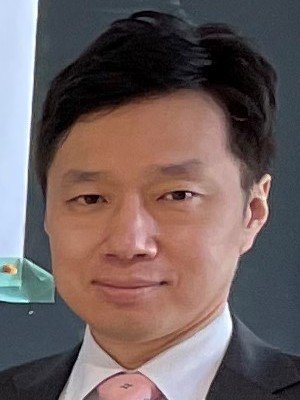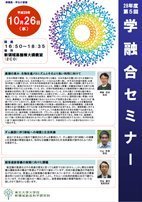AY2016 5th Gakuyugo Seminar
- Date&Time:
- Oct 26, 2016 16:50~18:35
- Venue:
- Large Lecture Room (2C0), New Frontier Science Bldg.

Benefits of the Kuroshio Current: Biological Production Mechanisms and Their Better Utilization
Professor Hiroaki SaitoWhen considering the climate, environment, and biological production characteristics of Japan, one starting point is to understand the location and origin of the Japanese archipelago. The Japanese archipelago is bordered by a plate subduction zone and is located at the mid-latitudes of the western edge of the Pacific Ocean (24-46°N), where the Kuroshio Current and Oyashio Current, the western boundary currents of the Pacific Ocean, flow along a narrow continental shelf. The fact that the Kuroshio flows just offshore of Japan suggests the existence of various physical mechanisms that supply nutrients from the deep to the surface layer. In addition, organisms are transported from both low and high latitudes, making the Kuroshio region one of the most biodiverse seas in the world. The richness and diversity of Japan's seafood is due in large part to the geographical characteristics of the Japanese archipelago, which is washed by the Kuroshio Current. However, the Kuroshio transports nutrient-poor subtropical water. The name "Kuroshio" comes from the blue-black color of the water, which has little phytoplankton and is highly transparent. Why does the Kuroshio region have a high fishery production despite being an oligotrophic region? I have named this the "Kuroshio Paradox". In order to understand the Kuroshio Paradox, it is essential to elucidate the nutrient supply mechanism by physical oceanic processes, the food web structure of the Kuroshio ecosystem, and the physiological and ecological characteristics of the ecosystem components, such as their prey-predator relationships, as well as their response to water temperature and food concentration. In addition, it is necessary to understand the response of the Kuroshio ecosystem as a system, in addition to the response of individual ecosystem component species to environmental changes. In order to do so, it is essential to have a cross-disciplinary research system with researchers from various academic fields such as ocean physics, biogeochemistry, plankton ecology, fish production, and numerical modeling. In this presentation, I will introduce the latest findings on the mechanism of high biological production in the Kuroshio region, and what needs to be done in the future for better utilization of marine ecosystem services based on scientific knowledge.

Compensation for relocation due to dam construction and livelihood reconstruction
Professor Mikiyasu Nakayama
Using examples of dams built in the past in Japan and overseas, this paper will propose what kind of compensation should be provided and what measures should be taken to rebuild people's lives, based on the actual situation of compensation for relocation and livelihood reconstruction caused by dam construction.

Challenges in Realizing a Supersonic Passenger Plane
Visiting Professor Kenji Yoshida
It is no exaggeration to say that the history of aircraft speed is the history of its development. However, today's passenger planes fly below the speed of sound for reasons of operational efficiency. In order to expand the possibilities of air transportation in the future, we are waiting for the emergence of passenger planes that can fly faster than the speed of sound, but there are still issues to be solved in terms of their economic efficiency and environmental compatibility. However, the U.S. and Japan are continuing to take on the technological challenges. I would like to introduce some of these efforts and discuss the feasibility of a supersonic passenger plane.

